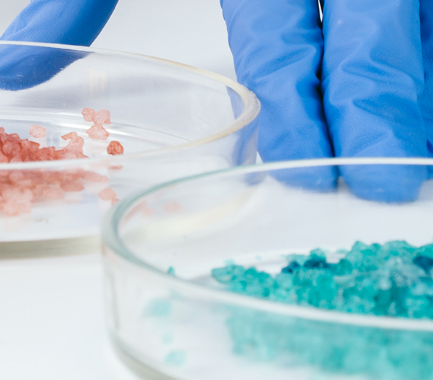Your contact
PENPET-Team - Hamburg

Jan Prager
Sales
Tel. +49 (0) 40 - 675 7 99 10
sales@penpet.de
Get in touch with us.
Diethylene Glycol (DEG)
Diethylene glycol is a dihydric alcohol and belongs to the group of glycol ethers. In the chemical industry, it is mainly used as a raw material for the production of polyesters and other organic compounds. Diethylene glycol is obtained from the simpler ethylene glycol by ethoxylation. It usually occurs as a by-product during its manufacture.
Diethylene glycol is used as a starting material for the production of saturated and unsaturated polyester resins, polyurethanes and plasticizers. In addition, it is used in organic synthesis as a raw material for the production of 1,4-dioxane and morpholine. Diethylene glycol can be used as a solvent and is used, among other things, in the processing of synthetic resins, oils, dyes and nitrocellulose. As a humectant, it is added to inks and glues, but also to tobacco and corks. Since mixtures of diethylene glycol and water have a lower melting point and a higher boiling point than pure water, the substance is also used as an antifreeze and as an additive in brake and hydraulic fluids.
At PENPET you can reliably order the required amount of diethylene glycol. We look forward to receiving your inquiry for an individual offer. Delivered as a liquid in tank containers. We can also offer drums and IBCs from the DEG warehouse.
CAS no. 111-46-6
EINECS no. 203-872-2
Molecular formula: C4H10O3
Synonyms: Diethylene glycol, diglycol, diglycol, dihydroxydiethyl ether, 3-oxapentane-1,5-diol, 2,2′-oxydiethanol, 2-(2-hydroxyethoxy)ethanol, DEG
Areas of application: Production of polyester resins, polyurethanes, morpholine, 1,4-dioxane and plasticizers, used as solvents, humectants, antifreeze and pharmaceutical-cosmetic raw materials
More Information
Diethylene glycol has a symmetrical structure and consists of two molecules of the simpler ethylene glycol, which have formed a bond through the dissolution of alcoholic groups and the elimination of water. The substance thus has an ether group in the center, which gives it high solubility in water.
At the ends of its structure, the compound has two hydroxy groups available for reactions. This enables a reaction with ethylene glycol or other molecules of diethylene glycol to form more complex ethers such as triethylene glycol or polyethylene glycols. These reaction products are already present in different quantitative ratios during production.
Under normal conditions, diethylene glycol is a clear, colorless liquid. The compound is largely odorless and has a sweet taste. Diethylene glycol is completely miscible with water, alcohol, acetone, diethyl ether and ethylene glycol.
Diethylene glycol is flammable but not explosive under normal conditions. At higher temperatures it forms flammable air-vapor mixtures with the ambient air. The vapors are heavier than air due to their higher density. They can accumulate on the ground or spread unnoticed. To avoid remote ignition, keep diethylene glycol away from ignition sources such as welding sparks, open flames, hot surfaces and electrical contacts.
When burning and thermally decomposing diethylene glycol, pungent, irritating and harmful gases are produced. Among other things, carbon monoxide is released. The compound reacts violently with strong acids and oxidizing agents.
Diethylene glycol causes irritation on contact with skin and eyes. The affected parts of the body should be rinsed thoroughly with water and medical treatment should be arranged.
Diethylene glycol is toxic. If larger amounts are swallowed, there is a risk of serious damage to health. Severe and potentially fatal diethylene glycol poisoning has typical phases in which metabolic symptoms, organ damage and neurological damage follow one another. If there are any signs of poisoning such as nausea, stomach problems, confusion or unconsciousness, urgent medical attention must be sought.
